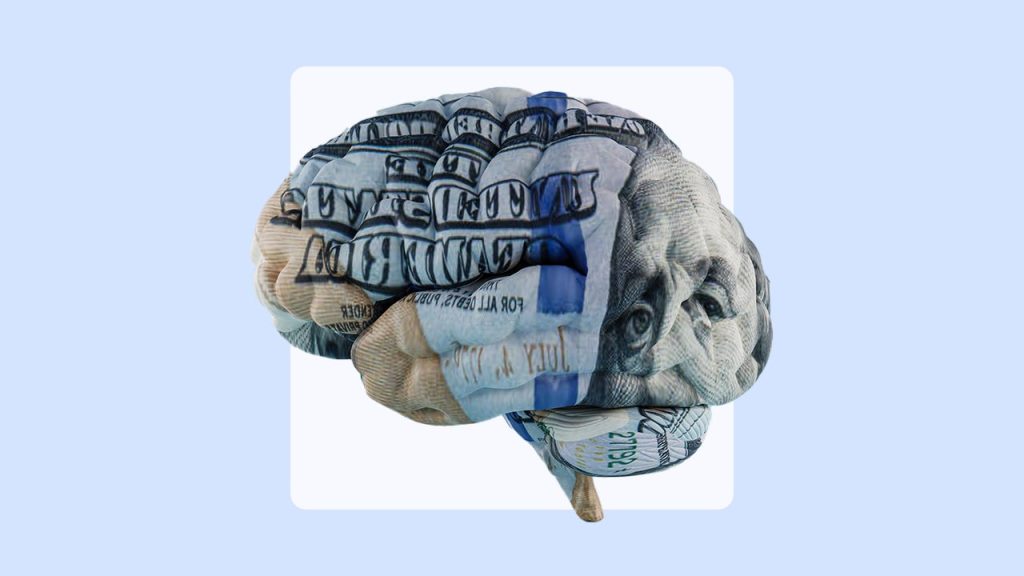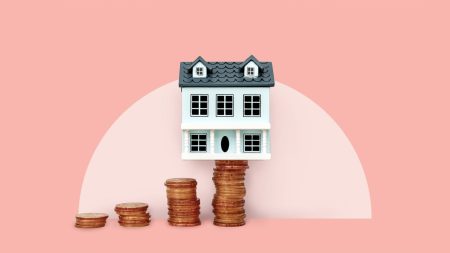Key takeaways
- Psychological triggers can have a major impact on credit card spending.
- Spending on cards can feel easier than paying in cash, but the financial consequences can be steep.
- Help is available if you find yourself battling an overspending habit.
It’s well documented that some cardholders have problems when it comes to overspending on their credit cards, leading to debt that can be difficult to repay.
But why do cardholders feel freer when buying higher-priced items on their cards — including vacations, furniture, electronics, appliances and jewelry — when they would be much more restrained when paying for the same items with cash?
According to an MIT study on the neural mechanisms of credit card spending, this could be because credit cards reduce the pain of payment and, as such, “release the brakes” that hold expenditures in check. In fact, the study noted that credit cards could actually encourage cardholders to “step on the gas,” increasing motivation to spend.
Ultimately, it’s all about emotions, perception and behavioral psychology, says Jonathan A. Kolmetz, a financial therapist and certified financial planner (CFP) who specializes in the psychology of money, spending behavior and financial decision-making. “There are key psychological levers that keep people swiping,” he says, including:
- Removing pain: For example, the way spending $200 on a credit card for a new pair of high-end athletic shoes feels different from spending the same amount in cash.
- Overspending to gain rewards: As in the case of cardholders overspending on their credit cards to rack up value in the form of points, miles and cash back.
- Fear of missing out (FOMO): The way that having premium credit cards like The Platinum Card® from American Express encourages brand identity, exclusivity and a sense of belonging.
Four in 5 cardholders make at least some effort to earn rewards, according to Bankrate’s Chasing Rewards in Debt Survey. And, in fact, many people who sign up for a rewards credit card have a good credit score and are able to pay off their balances every month. In turn, they avoid paying interest when spending to earn points, miles or cash back.
But that isn’t the case for others who make a game out of accumulating rewards and then don’t pay their cards off after each billing statement. What’s really fascinating is how it often takes all three levers — removing pain, gaming the system and increasing feelings of status and belonging — to convince these people to pay annual fees and rack up high-interest debt, says Kolmetz. “The banks know it. The marketers know it. But most cardholders don’t.”
The mental gymnastics of credit cards
The combination of brain chemistry, gamification and FOMO connect to make cardholders feel that overspending isn’t as potentially dangerous as it is, says Kolmetz.
“Credit cards are not inherently bad. Sometimes people’s needs and desires don’t allow them to see the forest for the trees,” he says. “It’s a capitalist society and for-profit corporations have boards and shareholders that want them to maximize revenue.”
When it comes to credit cards, some people are naturally pessimistic, always looking for danger, says Kolmetz. “Others are more susceptible and open to being persuaded to spend more on their cards.”
In these cases, deductive reasoning goes away, making people more susceptible to gamification, says Kolmetz. “The brain uses mental gymnastics to negate annual card fees because you’re earning points and miles to ‘pay’ for vacations,” he says. “If you have needs or high desires in your life, it’s not much of a mental jump to spend.”
The pain of cards versus cash
According to Kolmetz, credit cards can effectively hijack your brain’s pain system. “Paying with cash hurts,” he says. “You feel it leave your hand. Your brain registers it as real loss, activating the insular cortex, the same region that processes physical pain. That pain makes you pause, rethink or even walk away.”
But credit cards mute that pain. “The swipe or tap distances you from the cost. You don’t see or feel money leaving, just a quick transaction,” says Kolmetz. “And because there’s a delay between spending and paying the bill, your brain separates the action from the consequence.”
Gambling with rewards
In a way, credit card points are like a poor man’s DraftKings, says Kolmetz. “It’s not outright gambling, but the feeling? Damn close. Chasing points is like trying to get comped at a casino — you might get a free buffet, but the house always wins,” he says. “The math behind reward programs is engineered in the bank’s favor. In aggregate, they profit off transaction fees, interest and breakage (points that never get redeemed).”
Of course, many cardholders navigate these rewards programs responsibly, using a targeted approach to earn rewards that allows them to redeem for travel that they otherwise couldn’t afford. They track their rewards using spreadsheets, spend strategically to get the most points, miles or cash back and seek the best redemption options to cover costs, including business or first-class flights or stays in premium hotels.
In fact, 20 percent of American travelers will use rewards points or miles to pay for their summer 2025 travel, according to Bankrate’s 2025 Summer Travel Survey.
Credit cards and FOMO
Luxury credit cards tap into human tendencies around brand identity, exclusivity and FOMO, says Kolmetz. “But here’s the twist: this isn’t just for the rich. Humans are wired to seek belonging, and being part of an affinity group creates a sense of value and status,” he says. “That’s why people flex an Amex Platinum card at dinner but also why we willingly pay to be Costco members, which, let’s be honest, is about as unsexy as it gets.”
The card itself becomes a symbol, a physical marker of the tribe you belong to, says Kolmetz. “It’s no different than a Rolex watch, a Hermès Birkin bag or even a Starbucks Gold Card. Every company wants in on this game, weaving membership and status into their brand story,” he says. “Whether it’s an [Amex] Centurion Card or a warehouse club ID, the psychology is the same — belonging equals value.”
Getting help
The reasons people get into credit card debt may be complex and varied, but the impact of doing so is almost universally negative. Among credit card debtors, 84 percent say that debt impacts their financial choices — such as whether to make a big purchase, take a vacation or look for a new job, according to Bankrate’s Credit Card Debt Report. Twenty-nine percent of card debtors said their choices were being significantly impacted.
If your credit card debt is out of control, it’s important to recognize that you’re not alone. According to Kolmetz, “It’s a very common problem that comes with embarrassment, shame and guilt. Not getting help will only further the problem.”
Develop strong financial systems
Getting out of credit card debt is all about being intentional and developing systems, says Todd Christensen, an accredited financial counselor and financial educator at MoneyFit, a nonprofit organization that offers debt relief, financial education and personalized support. “Willpower is not enough,” he says. “That’s why it’s important to develop systems that automatically pay your bills. A key tool is creating a separate checking account from the one you use to pay your bills.”
Once these systems are set up, debtors can spend the money in that separate account however they want — but when it’s gone, it’s gone, says Christensen. “You can’t transfer more money over from a bill-paying account,” he says. “That is one of the tools I teach so that clients aren’t fighting impulse buying because impulse always wins.”
Know your numbers
Complement your new financial systems with a sustainable budget that will help you manage your expenses responsibly while keeping your debt payoff journey on track.
To start, use Bankrate’s Credit Card Payoff Calculator to enter the amount of your debt to see your estimated monthly payment and how long it will take to pay off. Methods available to help you whittle down your card’s balance include:
Card issuers’ messages of convenience, ease and spending can actually work against consumers taking these steps, says Christensen. “You can have it all with buy now, pay later. But it’s really about intentional spending,” he says. “Money is a finite resource. How are you going to control spending so that your money is going to the most important things to you and not to what marketers are telling you?”
Seek professional assistance
If managing debt on your own isn’t working, it may be time to get help from a reputable nonprofit credit counseling organization, like Christensen’s MoneyFit, Money Management International (MMI) or Greenpath. These groups can help you create a debt management plan that can lower your card interest and help you pay off balances faster.
“Clients who go into our program are told their cards will be closed. They have to start using debit cards, online bill pay or living by cash,” says Christensen. “It’s a forced discipline. I tell them this is going to be uncomfortable or a little less convenient,” says Christensen.
The irony is that card issuers market how convenient it is to use plastic or to build rewards, says Christensen. “It appeals to our nature, and yet, what it really is doing is making it harder for us to say no to unnecessary expenses,” he says. “The reality is that credit cards are more convenient, and it’s much easier to use them with merchants. You accumulate debt faster when it’s really easy to spend.”
The bottom line
While every consumer starts their personal finance journey from scratch, credit card companies have decades of data and billions of transactions to fine-tune the system. “They know exactly what works and what doesn’t,” says Kolmetz. “The real danger? Not fully understanding these forces — or which one pulls you in the most — makes you more susceptible. This isn’t about math. It’s about emotions, perception and behavioral psychology.”
Read the full article here









